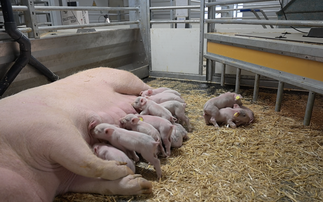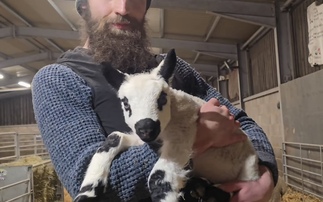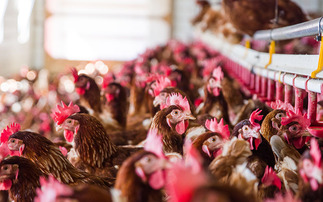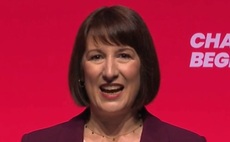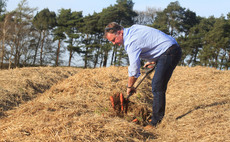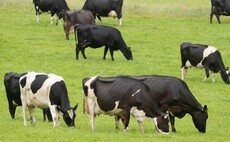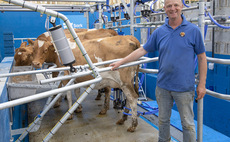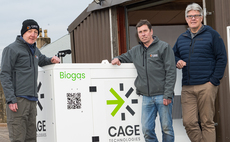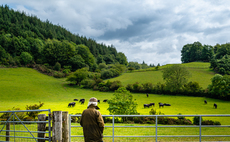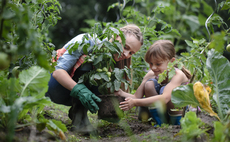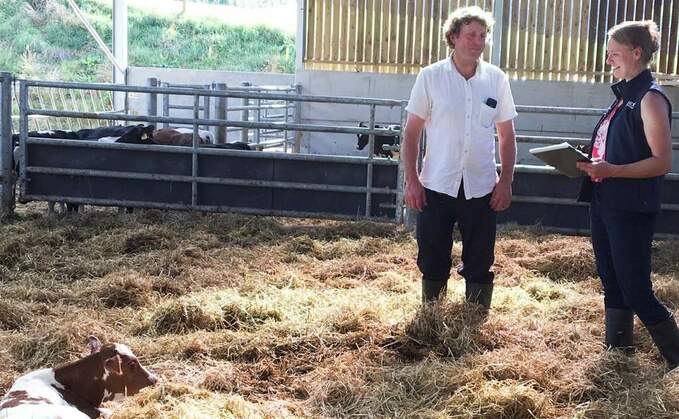
With the move towards environmental payments offering a host of different subsidy support scheme options, AHDB's new Farm Business Review is helping one mixed Wiltshire farmer take a hard look at his production costs as he prepares for the transition.
For mixed dairy and arable farmer Peter Shallcross, of Wallmead Farm, Tisbury, a deep dive into his business, with the help of AHDB's Farm Business Review and knowledge exchange manager Sarah Hurford, quickly identified on-farm gains as they assessed ways to shave input costs.
Making use of the review's Business Resilience Assessment and Ms Hurford's expertise, the pair realised minimising bought-in fertiliser use could lead to a substantial reduction in costs.
Mr Shallcross said: "During the farm walk, Sarah made note of the clover growing on-farm and suggested we integrate more of these legumes into our cropping system to reduce the requirement for purchased nitrogen fertiliser and protein feeds.
"Given her vast experience and expertise, this advice was incredibly useful as it meant we were able to dig deeper into the figures around our production costs and plan for the future."
The advice came after Ms Hurford noted the operation's proportion of total income spent on variable costs in that year had exceeded the business target of 35 per cent, with estimated costs coming in at 48 per cent.
Mr Shallcross added: "It was good timing as we had already been looking at ways to use the grass more efficiently as artificial phosphorous [P] and potassium [K] had been required to balance the grazing land nutrient requirement.
"As part of this, we invested in a manure spreader to spread composted manure and make up the P and K in the soil.
Therefore, by reducing fertiliser use to nitrogen to feed the first cut, we would then be able to rely solely on the clover for the rest of the grazing season."
Focus
Mr Shallcross then focused his attention on the AHDB service's Basic Payment Scheme (BPS) calculator, which requires users to enter data relating to the BPS payments they received in 2020.
While the farm is currently in a strong financial position with no long-term borrowing, Mr Shallcross' BPS claim currently equates to about £48,000.
This meant exploring the raft of new agri-environment options available would be crucial in attempting to recoup some of the losses the business will see when BPS starts to reduce.
After consultation with Ms Hurford, the pair quickly pinpointed two aspects of the future Sustainable Farming Incentive which would be applicable on-farm.
Mr Shallcross said: "The grassland soil standard option at the advanced level offered up an additional income of about £13,000, topped up by a further £6,900 for arable." He said the BPS calculator and additional advice had given him a ‘huge confidence boost'.
He added: "Seeing the figures clearly in front of you marks out a path and shows you the way forward when we had not seen one before.
"There seems to be a lot of information on subsidy schemes, but little detail, and this service has helped to demystify the options."
Kickstarting future planning to gear up for the transition to environmental payments has been a priority for Mr Shallcross over the past 18 months.
He said: "Originally worth £85,000, we used to rely on BPS payments to cross-subsidise our 700 ewe sheep enterprise, with payments covering renting the 300 acres.
"But with cuts to BPS and the added pressures of Brexit, the sheep were a poor bet so we sold them all and stopped renting the land and we therefore put plans in place to move away from being so reliant on BPS payments.
"The farm we rent where we keep youngstock has now been reduced in size and we have only retained the grassland part of the lease which has been changed from a Farm Business Tenancy to a grazing licence so we no longer claim the BPS."
"Our consultant was excellent and I would like to seek further support in the coming months"
Peter Shallcross
Ahead of the game
And getting ahead of the game has pushed Mr Shallcross to assess the next steps for his farming operation, expressing an interest in seeking further support from the service via the Agri-Business Appraisal, which is offered if a need is identified during the initial review with the consultant.
He added: "My experience with our consultant was excellent and I would like to seek further support in the coming months; getting the right adviser, who has an in-depth knowledge of your farming system, is incredibly important and this was the case with Ms Hurford."
Mr Shallcross' positive experience has also encouraged him to recommend the service to his peers, including farmers in the local area and the agronomist on-farm.
He said: "A lot of farmers are in the same position of uncertainty, with many unsure about how they will recoup the losses presented by the move away from direct payments.
"The service is fantastic and will help many farmers and growers break down and identify specific areas which they need to work on for their businesses to succeed and thrive during the next challenging few years."

Farm business key facts
- 300-hectare (741-acre) farm, majority owned, with some rented on a Farm Business Tenancy
- 80ha (198 acres) spring barley, 20ha (49 acres) maize, 15ha (37 acres) wheat; remainder grass and a large amount in Mid-Tier Countryside Stewardship, which started in 2021 and includes wild bird mix, nectar pollen mix and herbal leys
- Barley and wheat sold by neighbour; the neighbour also does most of the work towards growing and harvesting
- Variety of soils across the farm, including loams surrounding the river land; areas with stone brash on the hills, with some clay loams in between
- 210-cow dairy herd, which is increasing up to about 230; the business produces an 8,300- to 8,500-litre yield, of which this year has been 4,596 litres is from forage; grazing mid-March to October (weather-depending)
- All artificial insemination is predominantly to Norwegian Red, but will revert to Holstein Friesian or Friesian if yield drops
- Sexed semen used across heifers and cows; calving index at 370 days; closed herd, where all heifers are reared on another site by Peter Shallcross' brother-inlaw Jasper
- No off-farm enterprises, but the farm is currently involved with a group propagating imported Dutch elm disease resistant elm trees for planting around the country
- Investments include: a dry cow barn; dirty water lagoon is earth banked on blue clay with plans to triple in size and, if capital grants are forthcoming, buy a slurry separator
- Plans to minimise machinery investment include: once slurry tanker is registered as noncompliant from splash plate, contractors will work to empty the dirty water lagoon and in the small slurry store for parlour waste
AHDB Hub

For more projects from AHDB, visit the homepage.








